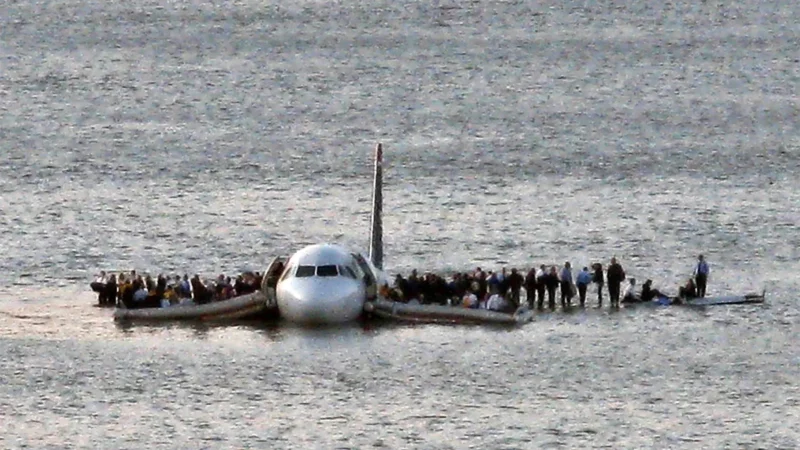The Evolution and Impact of Missiles: A Comprehensive Overview

Missiles have become one of the most powerful tools of modern warfare, significantly altering the landscape of military strategy and international relations. Their development has paralleled advancements in technology and changes in geopolitical dynamics. This article will explore the history, types, technological advancements, strategic significance, and future of missiles, as well as their impact on global security and warfare.
Table of Contents
ToggleHistorical Background
The concept of using missiles dates back to ancient times when armies utilized primitive projectile weapons. Early examples include catapults and siege engines, but the modern missile system as we understand it began to take shape in the 20th century.
World War II Era
The development of guided missiles took a significant leap during World War II. The German V-2 rocket, developed by Wernher von Braun, was the first long-range guided ballistic missile. It marked a turning point in missile technology, demonstrating the potential for using rockets as weapons of war. The Allied powers recognized the importance of missile technology and began to develop their own systems post-war.
Cold War Developments
The Cold War era saw an explosion in missile development as the United States and the Soviet Union engaged in a nuclear arms race. The development of intercontinental ballistic missiles (ICBMs) became a central focus, with both superpowers investing heavily in their arsenals. The Cuban Missile Crisis of 1962 highlighted the strategic importance of missiles, as it brought the world to the brink of nuclear war. The deterrent effect of nuclear missiles reshaped international relations, leading to treaties aimed at limiting their proliferation.
Types of Missiles
Missiles can be broadly categorized based on their range, guidance systems, and payload types. The primary classifications include:
- Ballistic Missiles
- Short-Range Ballistic Missiles (SRBMs): Typically have ranges of up to 1,000 kilometers and are used for tactical strikes.
- Medium-Range Ballistic Missiles (MRBMs): Ranges between 1,000 to 3,500 kilometers, suitable for regional conflicts.
- Intermediate-Range Ballistic Missiles (IRBMs): Range from 3,500 to 5,500 kilometers, capable of targeting distant adversaries.
- Intercontinental Ballistic Missiles (ICBMs): Have ranges exceeding 5,500 kilometers and are primarily designed for nuclear payload delivery.
- Cruise Missiles
- Unlike ballistic missiles, cruise missiles are powered throughout their flight and can be guided to their targets. They are generally used for precision strikes and can be launched from land, air, or sea platforms.
- Anti-Ship Missiles
- Designed specifically to target naval vessels, these missiles can be launched from aircraft, ships, or submarines.
- Air-to-Air Missiles
- These are designed for use by aircraft against other aircraft, with varying ranges and guidance systems.
- Surface-to-Air Missiles (SAMs)
- Designed to target aerial threats, these missiles are often deployed by ground-based systems.
Technological Advancements
The missile technology landscape has evolved dramatically over the decades. Several key advancements have shaped modern missile systems:
- Guidance Systems
- Early missiles used simple guidance systems, but today’s missiles utilize advanced technologies like Global Positioning Systems (GPS), inertial navigation systems, and terminal guidance to enhance accuracy.
- Hypersonic Technology
- Hypersonic missiles, which can travel at speeds exceeding Mach 5, have emerged as a significant development. Their speed and maneuverability make them difficult to detect and intercept, posing new challenges to existing missile defense systems.
- Stealth Technology
- Stealth capabilities allow missiles to evade radar detection, increasing their chances of successfully reaching their targets. This technology is particularly important for cruise missiles.
- Payload Versatility
- Modern missiles can carry various payloads, including conventional explosives, nuclear warheads, and precision-guided munitions, allowing for flexible military responses.
- Network-Centric Warfare
- Integration with advanced sensor networks allows for real-time targeting and coordination, enhancing operational effectiveness.
Strategic Significance of Missiles
Missiles play a crucial role in modern military strategy. Their strategic significance can be analyzed through several lenses:
- Deterrence
- The primary purpose of nuclear missiles is deterrence. Countries with nuclear capabilities can dissuade potential adversaries from engaging in conflict due to the fear of mutual destruction.
- Power Projection
- Missiles enable states to project power far beyond their borders. The ability to strike distant targets enhances a nation’s influence and can serve as a tool for coercive diplomacy.
- Regional Conflicts
- In regional conflicts, missiles can serve as a critical component of military strategy. Nations may use missile strikes to achieve tactical advantages or to respond to provocations.
- Counterinsurgency Operations
- In modern warfare, especially against non-state actors, missiles can provide a means to target insurgent leaders or infrastructure without the need for ground troops.
- Missile Defense Systems
- The development of missile defense systems by various countries aims to intercept and neutralize incoming missiles, leading to an arms race in both offensive and defensive capabilities.
Global Security Implications
The proliferation of missile technology has profound implications for global security:
- Arms Race Dynamics
- Countries are motivated to develop or acquire missiles in response to perceived threats from rivals, leading to escalating arms races. This is particularly evident in regions like South Asia, the Middle East, and East Asia.
- Nuclear Proliferation
- The spread of nuclear missile technology raises concerns about the potential for nuclear conflict. Countries that develop or acquire such capabilities can destabilize regional and global security.
- Terrorism and Non-State Actors
- The potential for non-state actors to acquire missile technology poses a significant risk. The threat of terrorist organizations using missiles to strike high-value targets raises alarms among security agencies worldwide.
- International Treaties and Agreements
- Efforts to regulate missile proliferation have led to treaties like the Strategic Arms Reduction Treaty (START) and the Intermediate-Range Nuclear Forces Treaty (INF). However, compliance and enforcement remain challenges.
- Geopolitical Tensions
- The presence of missiles in regional conflicts can exacerbate tensions. Countries may engage in preemptive strikes or escalatory actions in response to perceived threats from missile capabilities.
Case Studies
Several case studies illustrate the impact of missiles on global security dynamics:
- North Korea
- North Korea’s missile development program has raised alarms worldwide. The country’s ICBM tests and nuclear capabilities have led to increased tensions in the Asia-Pacific region, prompting responses from the United States and its allies.
- India and Pakistan
- The missile capabilities of India and Pakistan have been central to their rivalry. Both countries possess nuclear arsenals and a range of ballistic and cruise missiles, raising concerns about the risk of conflict.
- Israel and Iran
- The strategic balance in the Middle East is influenced by missile capabilities. Israel’s advanced missile defense systems are designed to counter threats from Iranian missile programs, leading to heightened tensions.
- Russia and NATO
- The resurgence of Russian missile development has prompted NATO to bolster its defenses in Eastern Europe. The deployment of intermediate-range missiles by Russia has raised concerns about a renewed arms race.
The Future of Missiles
The future of missile technology and strategy is likely to be shaped by several key trends:
- Increased Automation and AI
- The integration of artificial intelligence into missile systems could enhance targeting capabilities and decision-making processes. Autonomous missile systems may become more prevalent, raising ethical and operational questions.
- Space-Based Missile Defense
- As missile threats evolve, space-based missile defense systems may emerge as a key component of national security strategies. The potential for space-based platforms to intercept missiles before they reach their targets is an area of active research.
- Global Cooperation and Regulation
- The international community may need to strengthen efforts to regulate missile technology and prevent proliferation. Treaties and agreements will play a crucial role in ensuring global stability.
- Emerging Technologies
- Advances in materials science, propulsion, and miniaturization may lead to the development of new missile systems with unprecedented capabilities.
- Hybrid Warfare
- The integration of missile capabilities into hybrid warfare strategies may redefine conflict dynamics. State and non-state actors may use missiles in conjunction with cyber, information, and conventional warfare tactics.
Conclusion
Missiles have become a cornerstone of modern military strategy, influencing global security dynamics in profound ways. As technology continues to evolve, so too will the implications of missile development for international relations and warfare. The challenges posed by missile proliferation, regional conflicts, and the potential for non-state actors to acquire advanced missile capabilities necessitate continued vigilance and cooperation among nations. Understanding the history, types, and strategic significance of missiles is essential for navigating the complexities of modern security challenges. As we look to the future, the role of missiles in shaping the course of conflicts and diplomacy will remain critical, requiring thoughtful consideration and proactive measures to ensure global peace and stability.





